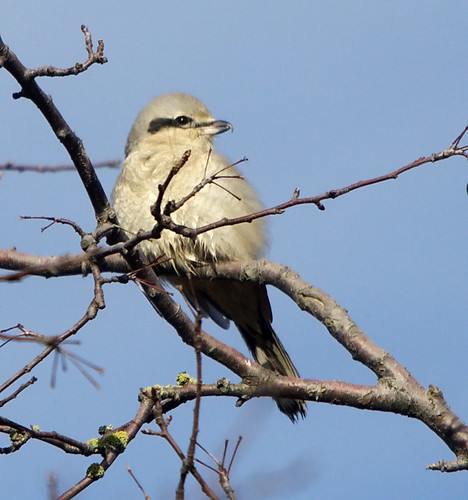 Photograph by Jim Frink (c) 2009
Photograph by Jim Frink (c) 2009http://minnesotabirdnerd.blogspot.com/2009/01/i-just-received-coolest-bird-photo-ive.html
 Photograph by Jim Frink (c) 2009
Photograph by Jim Frink (c) 2009
In every season there are a few birds that decide to show up in New Jersey that are not the usual annual visitors. Winter is no different, and this year in the state we have plenty of rarities to chase around. Last year brought Bohemian Waxwings and a Townsend’s Solitaire from the west, along with the more common rarities, whatever that may mean. This winter has been quite a treat so far, delivering a Eurasian (or Common) Teal to the Meadowlands once again, Rough-Legged Hawks throughout the state, more Pine Siskins than you can shake a stick at, and of course a handful of Snow Owls from Liberty State Park and the Meadowlands down through Forsythe National Wildlife Refuge and Stone Harbor.
Photograph by Rick Leche © 2007
One of the most popular rarities this winter has been the Green-Tailed Towhee down in Collingswood, NJ. This small passerine exemplifies the term rarity here in the Garden State, as this bird represents only the seventh NJ record of the bird (and the first since 1985!). It has been frequenting a feeder and thankfully the home-owners have been kind enough to allow birders to visit their yard to observe the Towhee. Still, people should act as courteous as possible as well as remain aware of the bird’s state. Disturbing wildlife should not be a part of birding or other wildlife-viewing.
White-Winged Crossbills have been spotted in numerous places as well, along with their northern neighbors the Common Redpoll. While a small group of Sandhill Cranes usually visits the state in winter, a pair has shown up in Franklin Township and due to their miniscule numbers in the state these two have been quite popular as well. They have been scared off multiple times, however, so people should try to remain in their cars and use the vehicles as blinds to help them observe the birds.
Photograph by C.A. Mullhaupt © 2008
A Northern Shrike has once again shown up at the Great Swamp National Wildlife Refuge, and plenty of people have gotten good views. These songbirds are vicious, and this particular individual has already been seen tearing apart a sparrow. They are known to cache prey for later consumption, hanging them on wires, spines, or sharp branches. Blood will often leave a spattering of red on their breast feathers.

Photograph by Rick Leche © 2007
The water, of course, is also a great place to search for rare birds. Thick-Billed Murre was just spotted off the coast of NJ, and other winter rarities have been popping up every few days. Inland, both Eared Grebe and Horned Grebe have been sighted. Winter plumage can be a bit trickier than breeding plumages, but a careful and patient eye can discern between different types of gulls, grebes, and so on.
Eared Grebe
Photograph by Ananda Debnath © 2005
Horned Grebe
Photograph by Len Blumin © 2008
Good birding, everyone!
